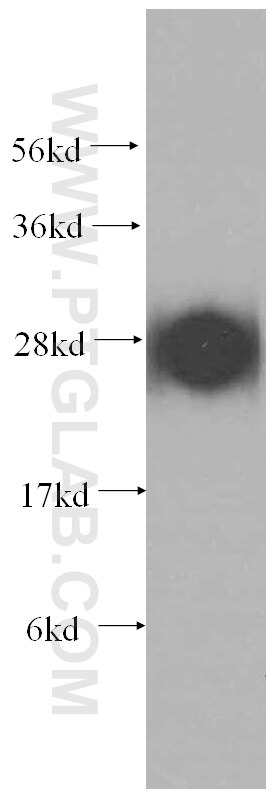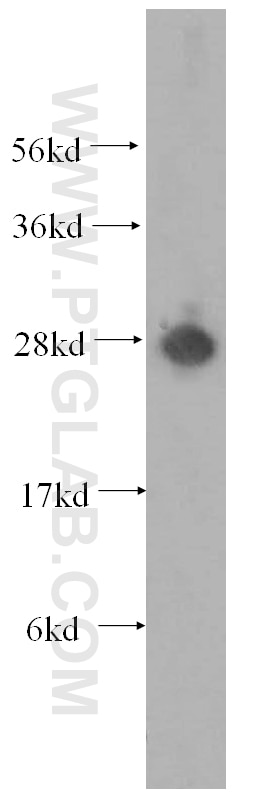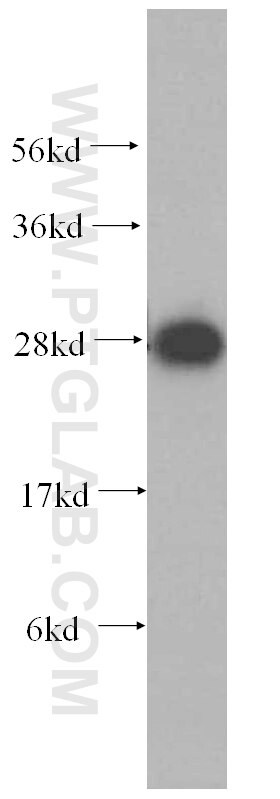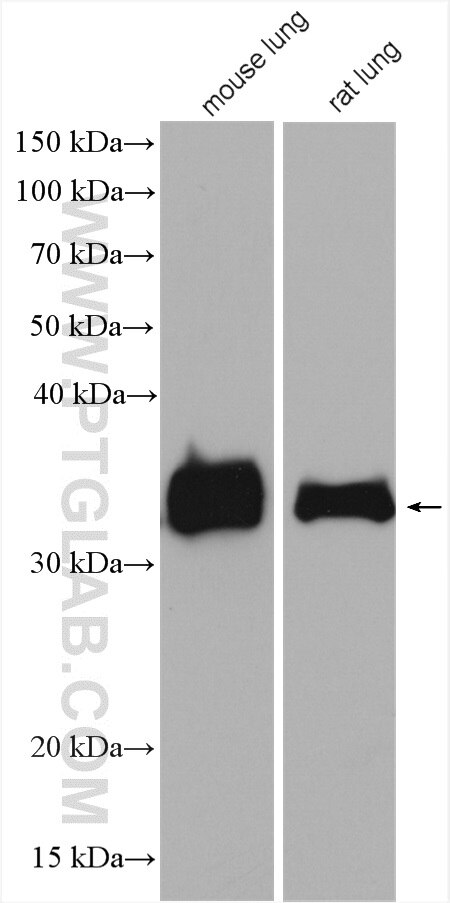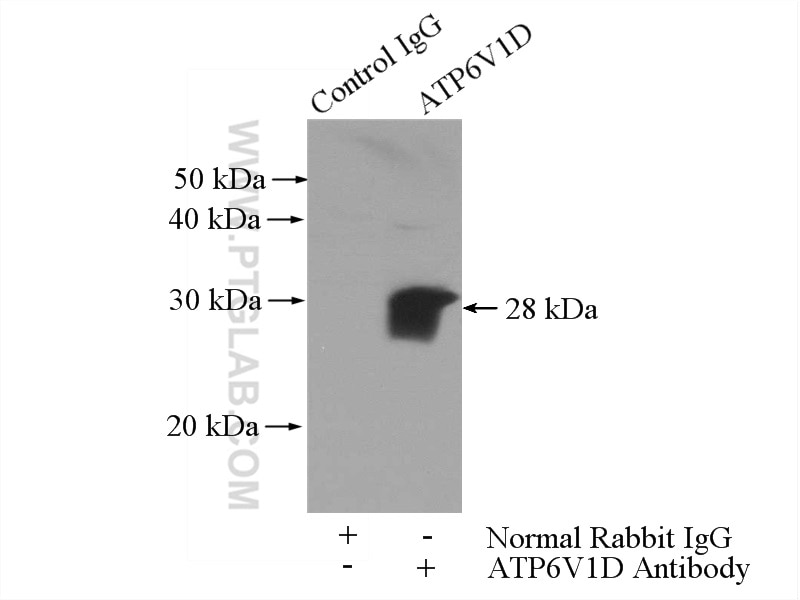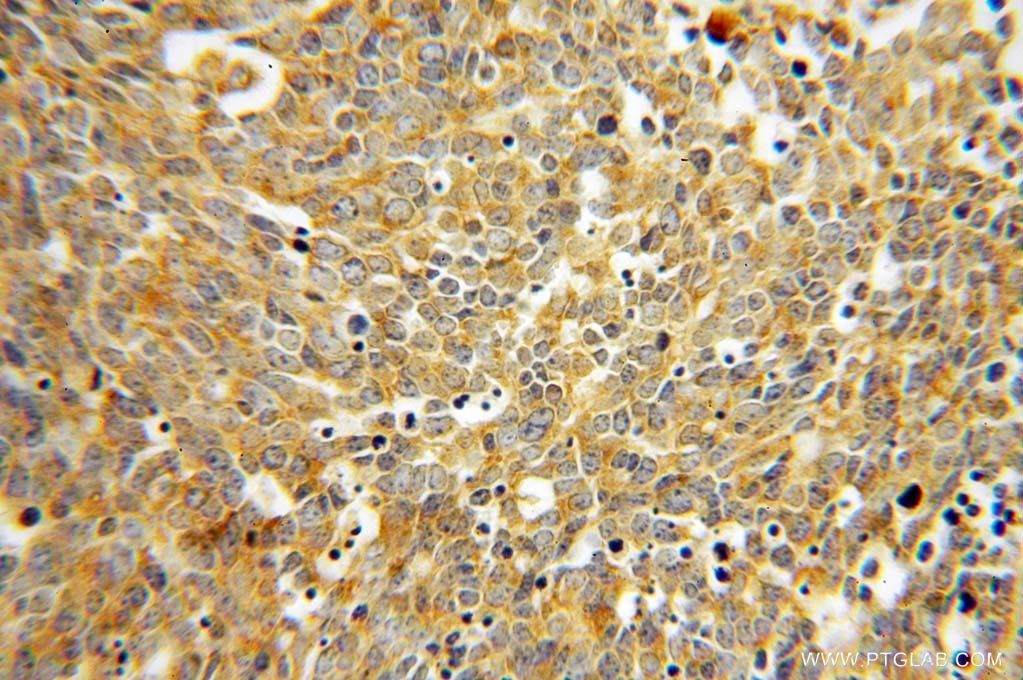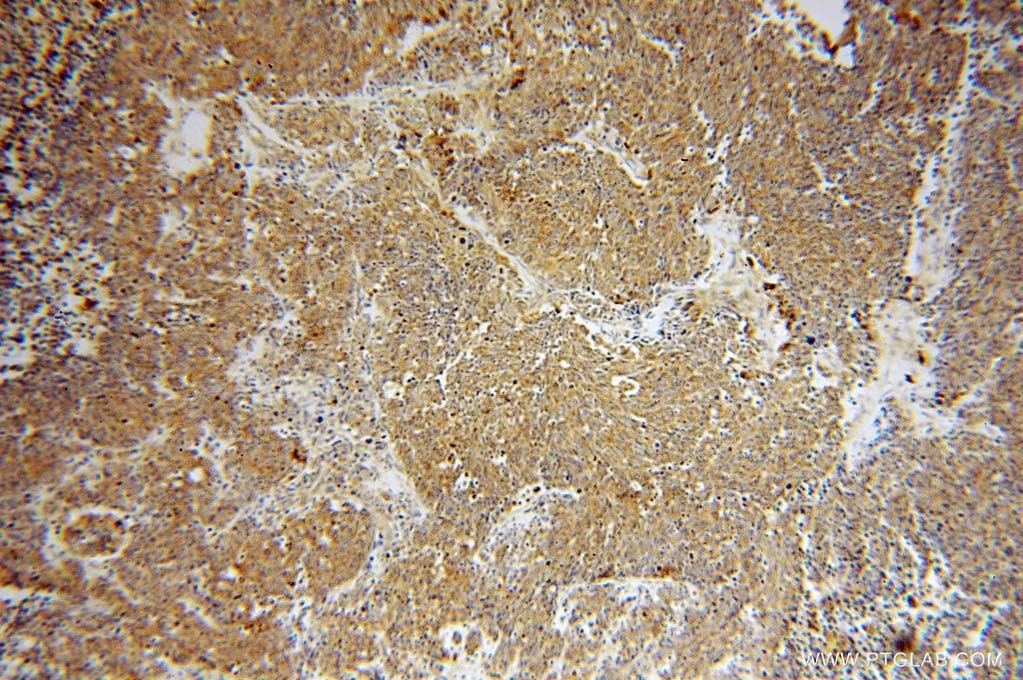Tested Applications
| Positive WB detected in | human brain tissue, mouse skeletal muscle tissue, mouse lung tissue, rat lung tissue |
| Positive IP detected in | mouse lung tissue |
| Positive IHC detected in | human lung cancer tissue Note: suggested antigen retrieval with TE buffer pH 9.0; (*) Alternatively, antigen retrieval may be performed with citrate buffer pH 6.0 |
Recommended dilution
| Application | Dilution |
|---|---|
| Western Blot (WB) | WB : 1:500-1:2400 |
| Immunoprecipitation (IP) | IP : 0.5-4.0 ug for 1.0-3.0 mg of total protein lysate |
| Immunohistochemistry (IHC) | IHC : 1:20-1:200 |
| It is recommended that this reagent should be titrated in each testing system to obtain optimal results. | |
| Sample-dependent, Check data in validation data gallery. | |
Published Applications
| WB | See 10 publications below |
| IP | See 1 publications below |
Product Information
14920-1-AP targets ATP6V1D in WB, IHC, IP, ELISA applications and shows reactivity with human, mouse, rat samples.
| Tested Reactivity | human, mouse, rat |
| Cited Reactivity | human, mouse, rat |
| Host / Isotype | Rabbit / IgG |
| Class | Polyclonal |
| Type | Antibody |
| Immunogen |
CatNo: Ag6737 Product name: Recombinant human ATP6V1D protein Source: e coli.-derived, PGEX-4T Tag: GST Domain: 1-247 aa of BC001411 Sequence: MSGKDRIEIFPSRMAQTIMKARLKGAQTGRNLLKKKSDALTLRFRQILKKIIETKMLMGEVMREAAFSLAEAKFTAGDFSTTVIQNVNKAQVKIRAKKDNVAGVTLPVFEHYHEGTDSYELTGLARGGEQLAKLKRNYAKAVELLVELASLQTSFVTLDEAIKITNRRVNAIEHVIIPRIERTLAYIITELDEREREEFYRLKKIQEKKKILKEKSEKDLEQRRAAGEVLEPANLLAEEKDEDLLFE Predict reactive species |
| Full Name | ATPase, H+ transporting, lysosomal 34kDa, V1 subunit D |
| Calculated Molecular Weight | 28 kDa |
| Observed Molecular Weight | 28 kDa |
| GenBank Accession Number | BC001411 |
| Gene Symbol | ATP6V1D |
| Gene ID (NCBI) | 51382 |
| RRID | AB_2243302 |
| Conjugate | Unconjugated |
| Form | Liquid |
| Purification Method | Antigen affinity purification |
| UNIPROT ID | Q9Y5K8 |
| Storage Buffer | PBS with 0.02% sodium azide and 50% glycerol, pH 7.3. |
| Storage Conditions | Store at -20°C. Stable for one year after shipment. Aliquoting is unnecessary for -20oC storage. 20ul sizes contain 0.1% BSA. |
Background Information
ATP6V1D is also named as ATP6M, VATD(V-type proton ATPase subunit D) and belongs to the V-ATPase D subunit family. ATP6V1D gene has been under strong negative selection during evolution and is highly conserved among mammals, flies, worms, yeast, plants, and bacteria(PMID:11435709). It is responsible for acidifying a variety of intracellular compartments in eukaryotic cells, thus providing most of the energy required for transport processes in the vacuolar system.
Protocols
| Product Specific Protocols | |
|---|---|
| FC protocol for ATP6V1D antibody 14920-1-AP | Download protocol |
| IHC protocol for ATP6V1D antibody 14920-1-AP | Download protocol |
| IP protocol for ATP6V1D antibody 14920-1-AP | Download protocol |
| WB protocol for ATP6V1D antibody 14920-1-AP | Download protocol |
| Standard Protocols | |
|---|---|
| Click here to view our Standard Protocols |
Publications
| Species | Application | Title |
|---|---|---|
Cell Mol Life Sci The Ncoa7 locus regulates V-ATPase formation and function, neurodevelopment and behaviour. | ||
J Ethnopharmacol Tangshen formula protects against podocyte apoptosis via enhancing the TFEB-mediated autophagy-lysosome pathway in diabetic nephropathy | ||
J Proteome Res Quantitative proteome of medulla oblongata in spontaneously hypertensive rats. | ||
Mol Cell Proteomics Multi Cell Line Analysis of Lysosomal Proteomes Reveals Unique Features and Novel Lysosomal Proteins | ||
Autophagy Inhibition of autophagy and induction of glioblastoma cell death by NEO214, a perillyl alcohol-rolipram conjugate | ||
Nat Commun Cross-linking of the endolysosomal system reveals potential flotillin structures and cargo |

